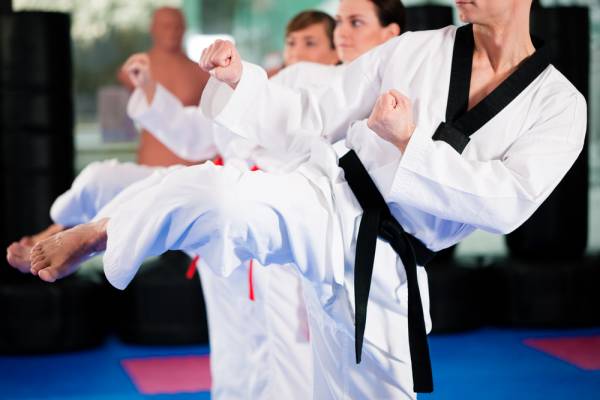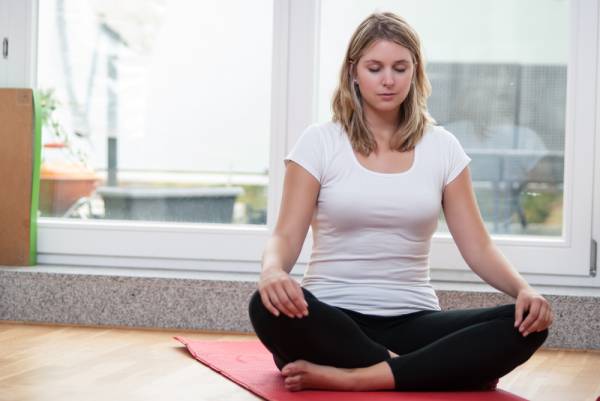I have no idea why, but “the f-word” – fear – seems to be a subject that is rarely discussed or addressed when it comes to self-defense training. In a real situation you are probably going to be absolutely scared witless. But instructors generally don’t talk about it. They’d rather tell stories and talk about their achievements. When it comes to addressing fear, they avoid the subject like the plague. Yet it plays a vital part in our survival.
When it comes to self-defense, the failure to acknowledge fear and its part in survival is preparing for failure. You must understand how fear works, how you react to it, and how you can make it work for you. Any instructor, trainer, or fighter who says they don’t experience fear is stupid, lying, or dangerous.
The Biochemistry of Fear
Fear is not only natural, but you can guarantee in the emotional pressure cooker of a real situation that you will experience it. Accepting that you will experience fear is an important step to trying to overcome it. The adrenal dump we experience in the fight-or-flight mode of our sympathetic nervous system is a natural part of the process of fear. While the experience of fear and the adrenal dump aren’t one and the same, they certainly show up hand in hand when things go south.
“Learning to confront fears in day-to-day life and learning to be comfortable being uncomfortable can help us develop our inner strength.”
Adrenaline has a number of physiological effects that are important to recognize. The adrenal dump can freeze an individual in the extreme pressure and stress of a violent encounter. Our heart rate increases, breathing becomes rapid and shallow, legs shake, and mouth goes dry. We experience tunnel vision, time distortion, auditory exclusion, and the need to urinate or make a bowel movement. We become monosyllabic in our verbal communication, and endure a loss of fine motor skills and a slowing down of decision-making and data recall.
Fear and stress change everything, even in the most trained individuals. And once fearful thoughts enter the mind, they can become contagious. Once one fearful thought enters, then others may follow.
But this same fight-or-flight response can also make us stronger, faster, and more resilient to pain. The adrenaline dump can actually mobilize us for action should we be able to control it. And we want all this to happen in a real survival situation, don’t we? This natural response to threat is hardwired into our body to help us and gives us the opportunity to influence the outcome of a situation.
Training Does Not Equal Total Preparation
I have witnessed experienced martial arts instructors be assaulted successfully by predators with zero training. And in the professional fight game strong, fit, and technical fighters fall apart against less strong, less fit, and less technical fighters because of a lack of mental preparation.

If your body is a loaded gun, then your mind is the trigger. If you can’t pull the trigger, you are in trouble. Teaching the mind to pull the trigger rather than to hit the power switch is a difficult skill to develop and especially hard to implement with a window of opportunity that lasts only a few seconds. Overcoming that fear and having the confidence to act decisively is the name of the game if we want to survive an assault.
Confidence is often defined as “believing in yourself.” I think this is absolute dribble. If confidence is a “belief,” then you could believe (without any swimming lessons) that you can swim, but when you jump in the pool and sink to the bottom, you may find “believing in yourself” doesn’t work. But if confidence is your actual capacity to employ some tactical, psychological, and physical skills even when you are scared, then I think confidence is one the most important attributes you can develop.
“The adrenaline dump can actually mobilize us for action should we be able to control it.”
There are many ways to overcome fear and develop confidence, but here are some of the things I think are vital to include in your training.
Mental Training
- Mastering positive internal dialogue and positive self-talk, including learning affirmations, counterattacking negative thoughts with positive ones, using repetitive mantras, and rejecting negative thoughts are vital tools. These tools have been used not only by the world’s greatest professional fighters, but are used in any pursuit or challenge where there is a considerable inside game.
- Guided mental imagery and visualization are amazing tools to assist in dealing with a real situation. Playing out a “what if” scenario in your head or being guided through one can prepare us mentally for it happening in the real world. If you have played the scenario over and over, when it actually happens you may be more adequately equipped to deal with it. Studies show the brain differentiates little between real life and visualization techniques.

- Learning to confront fears in day-to-day life and learning to be comfortable being uncomfortable can help us develop our inner strength. Learning to work past your power switch. We are all creatures of convenience and comfort, but gravitating toward doing things that make us uncomfortable and facing other fears rather than putting them in the “too hard” basket can help us become more confident. It can highlight how we respond to and act in the presence of fear and what we can do about it.
- Understanding your core beliefs. If you don’t think you are worthy, worth saving, or worth fighting for, then you won’t fight for your survival.
Physical Attributes
- Many of the physiological effects of the adrenal dump can be offset by the effective use of breathing. This is best practiced using diaphragmatic breathing techniques or meditation.
- Realistic self-defense training including stress inoculation and aggression drills may not be able to directly replicate the full experience of a real situation, as nothing can, but it can certainly take us as close as possible within the bounds of safety.
- Just like you can’t fake swimming once you are in the deep end, you can’t fake employing tactical, psychological, and physical skills in real situations for the most part, either. If you want to increase your chances of surviving a violent encounter, you need to experience the realities of fear before you are faced with them in real life.
- A knowledge and familiarity with the subject of self-defence, safety and personal protection.
- Health and fitness.
“Learning to confront fears in day-to-day life and learning to be comfortable being uncomfortable can help us develop our inner strength.”
Mental Mastery
Remember the mind comes first. Techniques are useless unless they can be applied tactically and with intent. People survive deadly assaults every day with no physical self-defense training whatsoever. This is because of instincts, luck, and having some of the tactical, physical, and psychological skills necessary to survive. This indicates to me very much of survival is determined by mindset.
One of my old teachers used to ask our class, “Who are you more afraid of, the guy who walks in and says he has ten black belts or the guy who says it doesn’t matter what you do to resist, but I’m not going to stop coming at you until I bite your nose off?” Who is your money on? And can you be that guy in return if your survival counts on it?
Check out these related articles:
- The Defense of Self – the Real Mental Value of Self-Defense Training
- How Being Fit Can Keep You Safe and Improve Your Day
- How Can Your Fitness Keep You Safe?
- What’s New On Breaking Muscle Today
Photos courtesy of Shutterstock.






